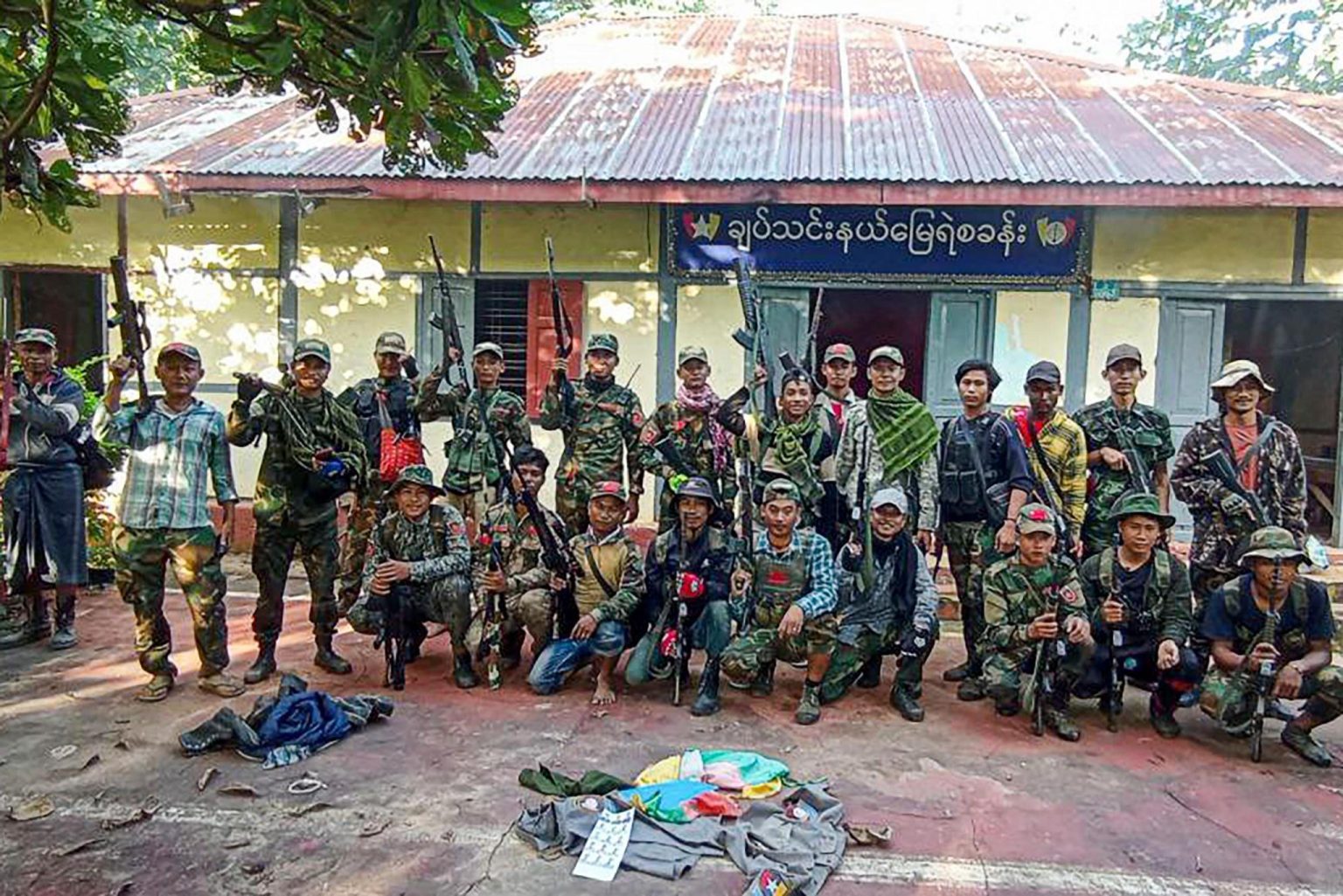
The Kanbalu District People’s Defence Force (PDF) attacked and burnt down a junta police station 25 miles north of Kanbalu town on Thursday morning, the resistance group said.
Battalion 2 of the PDF—which fights under the publicly mandated National Unity Government—targeted the site in Chat Thin village at 4am, seizing it after the 12 policemen inside withdrew following one hour of fighting, according to a statement.
A PDF member said that he saw the fleeing officers drag away the bodies of two slain members of the police force as they retreated.
“The armed men ran away from the police station,” he said. “Then Mi-35 [combat helicopters] came up from Kalay Town, so we withdrew.”
Myanmar Now was unable to independently verify any casualties in the clash.
The PDF claimed it was able to seize some weapons and ammunition from the station before destroying it.
The resistance forces continued their attack, targeting a nearby base of the military-backed Pyu Saw Htee militia, but were outgunned and unable to overtake the location.
“The Pyu Saw Htee base had strong firepower, so we couldn’t capture it,” the PDF member told Myanmar Now.
Some 60 militiamen and a few Myanmar army soldiers were reportedly stationed at the base.
Later that morning, the PDF, a local People’s Defence Team, and other area allies jointly attacked two other Pyu Saw Htee camps five miles north of Chat Thin and in Sabai Nanthar village 15 miles east of Kanbalu town.
While local defence forces have previously been able to capture some Pyu Saw Htee sites in villages such as Chat Thin and Chat Gyi, they were later reclaimed.
